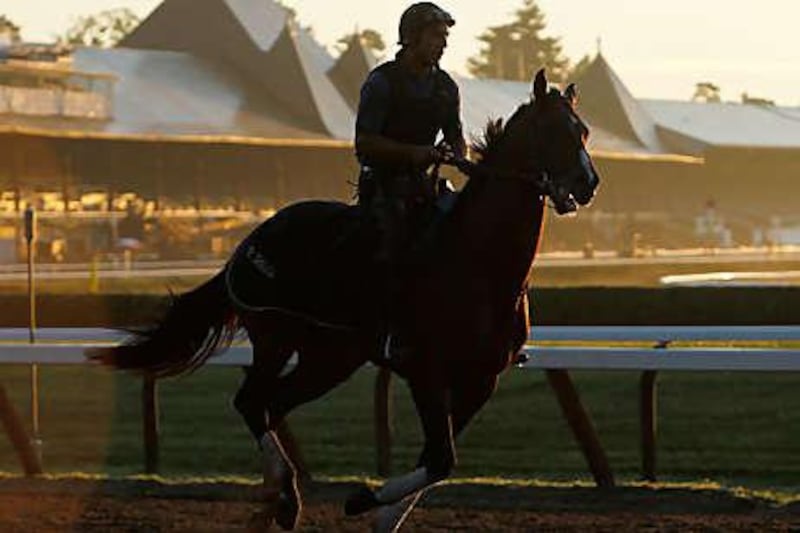To find the most huggable thoroughbred racecourse in America, readers of sports columnist Red Smith were directed to head north from New York City to Saratoga Springs, turn left on Union Avenue "and go back 100 years." The Saratoga track oozes history and nostalgia, as does its surroundings, while offering every amenity the contemporary horseplayer could want.
Ignore the automatic wagering terminals, the ubiquitous television monitors and the pricey concessions, and you could have been whooshed back one century through a time tunnel. After navigating through streets lined with well-kept Victorian homes and stately mansions in a city with a thousand structures on the National Register of Historic Places, you enter a living museum. Known as "The Spa", the track was conceived to attract visitors drawn by mineral baths that flourished in the area. It launched in 1863 while the nation was locked in the Civil War. On opening day, bloodshed from the horrific Battle of Gettysburg had barely dried.
Evoking the era of post-war civility, signs are scattered with polite reminders such as "No Chairs Please." A trolley car that calls itself Horsin' Around ferries folks to the gates. The throwback ambience is maintained by the wood clubhouse and grandstand, the awnings striped red and white and the gazebo with a performing band. (OK, the guitars are electric.) The elements create a county fair aura.
A canopy of trees provides shelter in a vast picnic section teeming with families hauling coolers, baskets of food and strollers - occasionally occupied by a wee lad dressed as a jockey. The real riders are reach-out-and-touch-close as they stride down a path through the picnickers, separated by a rail and a security guard, toward the paddock. Post-race, jockeys parade through the clubhouse crowd back to their quarters, sometimes pausing to sign an autograph or accept a compliment. Such intimacy is rare at US racetracks.
It is a slight exaggeration to say that when scenes for the film Seabiscuit were shot here, updating was required to approximate the late-1930s setting. The town is all aboard with the horsey atmosphere. The National Museum of Racing sits across the street from the course. Restaurants name menu items after legendary racehorses. Lawn jockeys stand sentry in front yards. The Shadwell Farm stable, in fact, is plunked right in the middle of a neighbourhood.
The arty set browses through paintings and sculptures, much of them equine-themed, at galleries. "The Natural", a life-sized horse assembled from twistable tree limbs and roots, can be yours for US$9,800 (Dh35,994). The population of 27,000 swells to triple in size during the meeting, 40 days this summer. The cards offer a mix of modest statebreds, promising lightly or un-raced two-year-olds and established stars. A graded stakes event occurs once daily on average.
Sheikh Mohammed bin Rashid Al Maktoum, Vice President of the UAE and Ruler of Dubai, has a substantial footprint here. He owns two horse farms and is associated with Fasig-Tipton, which auctions prized fillies and colts at a pavilion. Affectionately referred to by locals as Sheikh Mo, he headlined last year's sales, spending $5.5 million. Going back 100 years, sadly, also could refer to an age when horse racing earned its tag as the king of sports. In recent years, it has become a runt of the litter, operating of the fringe of the country's fun-and-games conscience.
Wagering on US races declined nearly 10 per cent to $12.3 billion in 2009 from the previous year and is down 19 per cent since 2003. The value of auction purchases in North America plummeted 32 per cent last year to $660 million. A few tracks have closed. Others are on life-support. A handful have taken such drastic measures as cutting race days to three per week, half of the standard amount. To recapture younger generations whose sporting passions have shifted (as well as to provide a revenue stream), selected tracks have become racinos, adding casino slot machines and other gambling options.
Installing such devices is unthinkable at The Spa. Necessary indulgences for the modern world are evident, but Saratoga forever will cling to the past, preserving a slice of Americana that recalls a simpler time when the most admired athletes were four-legged. sports@thenational.ae





